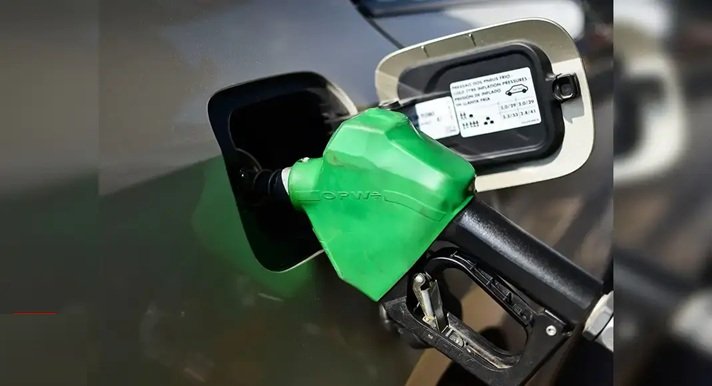Introduction: Retailers Entering Fuel Business
The gasoline organization has traditionally been dominated with the aid of usa-owned or large multinational oil organizations. However, in cutting-edge years, a developing style has emerged—stores moving into the fuel corporation. This motion is pushed via the usage of diversification strategies, developing patron call for, government deregulation, and possibilities for bypass-selling. For shops, including gas stations to their portfolio gives a modern day earnings flow into, stepped forward customer loyalty, and improved emblem visibility.
With evolving energy hints, technological improvements, and converting purchaser expectations, this organisation offers every opportunity and demanding situation. In this text, we’re able to discover why stores are entering the gas place, the advantages and dangers, a manner to set up a fuel station, and the contemporary day trends shaping the marketplace.
Why Retailers Are Entering the Fuel Business
1. Diversification of Revenue Streams
Retailers are an increasing number of making a funding in gasoline as it offers sturdy coins to go along with the float and an excessive-frequency buy phase. Fuel stations make certain consistent visitors, which enhances different retail offerings like consolation shops, food courts, and vehicle services.
2. Customer Convenience and Loyalty
Integrating gas stores with retail chains offers customers with one-stop answers. This improves purchaser enjoyment, encourages brand stickiness, and boosts foot internet page traffic.
3. Rising Vehicle Ownership
With developing vehicle possession, especially in growing markets, the name for fuel is anticipated to rise. Retailers see this as an opportunity to capitalize on extended-term call for traits.
4. Government Incentives
In many regions, governments are encouraging personal players to go into the fuel marketplace to grow opposition, beautify infrastructure, and create jobs.
5. Technological Advancements
Automation, virtual rate systems, and fuel control technology make it a whole lot less tough for shops to characterize and control gas stations successfully.
Types of Retailers Entering the Fuel Business
| Retail Segment | Examples | Advantages |
|---|---|---|
| Supermarket Chains | Walmart, Carrefour | High traffic, brand recognition |
| Convenience Store Chains | 7-Eleven, Circle K | Customer convenience, loyalty programs |
| E-commerce Platforms | Amazon (fuel partnerships) | Digital integration, last-mile delivery |
| Automotive Service Providers | MRF, Goodyear | Vehicle-centric offerings |
| Regional & Local Chains | Reliance, Essar | Local market knowledge, partnerships |
Benefits of Entering the Fuel Business
1. Enhanced Brand Positioning
Fuel stores provide outlets at risk to be seen as crucial services groups in choice to without a doubt shopping locations.
2. Cross-Selling Opportunities
Retailers can leverage gasoline stations to sell comfort items, coverage, loyalty programs, and subscription-primarily based offerings.
3. Infrastructure Expansion
Fuel stations increase into tier-2 and tier-three markets with fewer regulatory boundaries as compared to establishing new shops.
4. Employment Generation
Fuel stations create direct and oblique employment possibilities, together with logistics, customer service, and retail operations.
Challenges Faced through Retailers Entering Fuel Business
1. High Initial Capital Investment
Fuel stations require enormous premature funding in land acquisition, infrastructure, and devices.
2. Regulatory Compliance
Stringent protection, environmental, and licensing regulations add complexity to the industrial enterprise.
3. Price Volatility
Fuel fees are a challenge to international fluctuations, impacting profitability.
4. Competition
Retailers should compete with set up oil corporations and close by gamers.
5. Environmental Scrutiny
There is growing stress to undertake green alternatives, requiring investments in cleaner fuels and renewable electricity solutions.
Steps for Retailers to Enter the Fuel Market
1. Market Research
Analyze consumer behavior, competitor landscape, supply chain networks, and government rules.
2. Strategic Partnerships
Collaborate with oil companies to deliver contracts or joint ventures.
3. Financial Planning
Prepare an in depth fee form, hazard evaluation, and wreck-even assessment.
4. Infrastructure Development
Choose most appropriate locations based totally on internet web page web page visitors go with the flow, accessibility, and proximity to extraordinary shops.
5. Technology Integration
Adopt clever gasoline allotting structures, data analytics, and digital bills.
6. Sustainability Planning
Integrate electric powered vehicle charging elements and renewable electricity solutions.
Estimated Investment Breakdown for Fuel Station Setup
| Investment Category | Estimated Cost (INR Lakhs) |
|---|---|
| Land Acquisition | 50 – 150 |
| Construction & Equipment | 70 – 200 |
| Licensing & Regulatory | 5 – 20 |
| Technology Integration | 10 – 40 |
| Marketing & Branding | 5 – 15 |
| Initial Working Capital | 20 – 50 |
| Total | 160 – 475 |
Key Technologies Empowering Fuel Retailers
1. Automated Fuel Dispensers
Digital interfaces that make sure unique gas is dishing out and reduce human mistakes.
2. Data Analytics Platforms
Help tune gas intake patterns, client possibilities, and stock manipulation.
3. Payment Integration Systems
Offer UPI, credit score score score/debit playing cards, cellular wallets, and subscription-primarily based completely clearly models.
4. IoT Monitoring
Real-time monitoring of gasoline ranges, leakage detection, and universal overall performance optimization.
5. Green Energy Solutions
Integration of sun panels and EV charging infrastructure.
Future Trends Shaping the Fuel Retail Sector
1. Rise of Electric Vehicles (EVs)
Retailers are more and more which includes EV charging stations along fuel pumps to cater to the growing EV phase.
2. Adoption of Alternative Fuels
Biofuels, hydrogen, and compressed herbal fuel (CNG) are gaining traction as sustainable options.
3. Digital Experience Enhancements
Retailers are making an investment in cell apps for gas bills, loyalty rewards, and navigation assistance.
4. Smart Supply Chains
Predictive analytics and automated inventory manipulation systems are reducing operational costs.
5. Regulatory Focus on Sustainability
Government guidelines are pushing for decreased carbon emissions, encouraging green gasoline tasks.
Case Studies: Retailers Who Successfully Entered the Fuel Market
1. Reliance Retail
Reliance has prolonged its footprint through integrating gasoline retailing with its gift retail and logistics networks, presenting competitive pricing and advanced purchaser experience.
2. Walmart
Through strategic partnerships, Walmart leveraged its modern customer base and delivery chain infrastructure to scale fuel operations in select markets.
3. 7-Eleven
By combining comfort retailing with gasoline offerings, 7-Eleven maximized consumer footfall and advanced loyalty through bundled offers.
Regulatory Framework: What Retailers Must Know
Licenses Required
- Petroleum advertising and advertising and marketing license
- Environmental clearance
- Safety compliance certifications
- Trade and issuer lets in
Safety Norms
- Fire and explosion prevention structures
- Hazardous fabric managing protocols
- Emergency response groups
Taxation
- Excise and customs duties
- State-degree gas taxes
- Compliance with energy conservation mandates
Environmental Responsibility in Fuel Retailing
Key Initiatives
- Installing vapor recuperation structures
- Wastewater remedy answers
- Rainwater harvesting
- Adoption of electrical and hydrogen gasoline pumps
Carbon Offset Strategies
Retailers can invest in reforestation applications and energy-green generation to offset carbon footprints.
Marketing Strategies for Fuel Retailers
1. Loyalty Programs
Introduce praise factors for gas purchases redeemable throughout the retail community.
2. Cross-Selling
Offer discounted groceries, automobile add-ons, or automobile insurance at fuel stores.
3. Location-Based Advertising
Use geo-centered classified ads and virtual signage to draw close by customers.
4. Customer Engagement
Provide gasoline fee signals, preservation suggestions, and fuel-saving publications via cell apps.
Potential Revenue Streams from Fuel Retail Operations
| Revenue Source | Description | Revenue Potential |
|---|---|---|
| Fuel Sales | Core offering with high volume | High |
| Convenience Store Sales | Snacks, beverages, automotive supplies | Medium |
| Car Services | Oil changes, tire maintenance | Medium |
| Loyalty Programs | Points and offers boosting repeat visits | Medium |
| EV Charging Stations | Subscription and per-use fees | Growing |
| Advertising Space | Partner branding at fuel sites | Low but steady |
Read More: Steinberg Media Technologies: Pioneering Music Production Software and Hardware
FAQs – Retailers Entering Fuel Business
Q1. Is the gasoline business profitable for shops?
Yes, gasoline commercial enterprise companies give strong coin flow and complement one in every type of a type of sales streams, however profitability depends on region, funding, and pricing approach.
Q2. What are the most important dangers to worry about?
High capital investment, regulatory compliance, gasoline rate volatility, and environmental issues are key annoying situations.
Q3. Can stores enter the gasoline organization without oil businesses?
It is tough because delivery contracts and distribution networks are generally controlled with the aid of the manner of installation players. Partnerships or franchises are advocated.
Q4. How can stores make their gas commercial enterprise greater sustainable?
By putting in EV charging points, the use of renewable energy, and adopting purifier fuels like CNG or biofuels.
Q5. What era can decorate operational efficiency?
Automated gas dispensers, IoT monitoring, statistics analytics, and virtual rate answers appreciably beautify operational average overall performance.
Conclusion
Retailers coming into the gasoline industrial organisation are entering into one of the maximum dynamic and vital sectors of the economic tool. The synergy amongst retail and gasoline offerings presents a first-rate opportunity for growth, customer retention, and numerous revenue streams. However, success requires meticulous planning, regulatory adherence, funding in era, and a focus on sustainability.
As the organization evolves with electric powered powered mobility and inexperienced solutions, shops who adapt early and embody innovation are poised to lead the future of fuel retailing.










